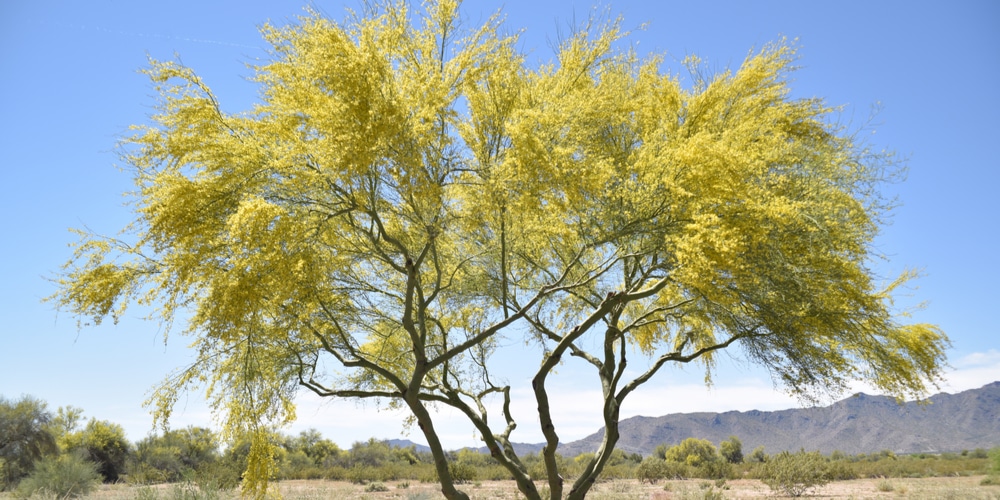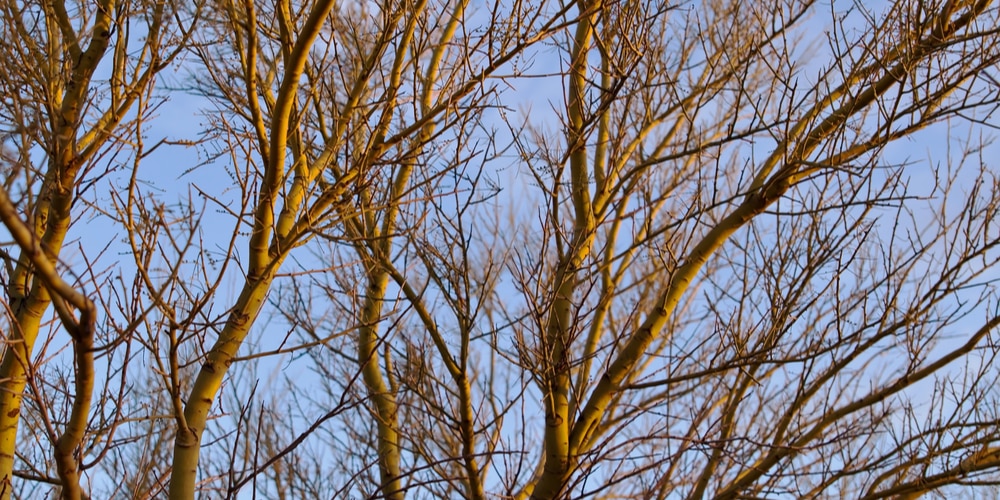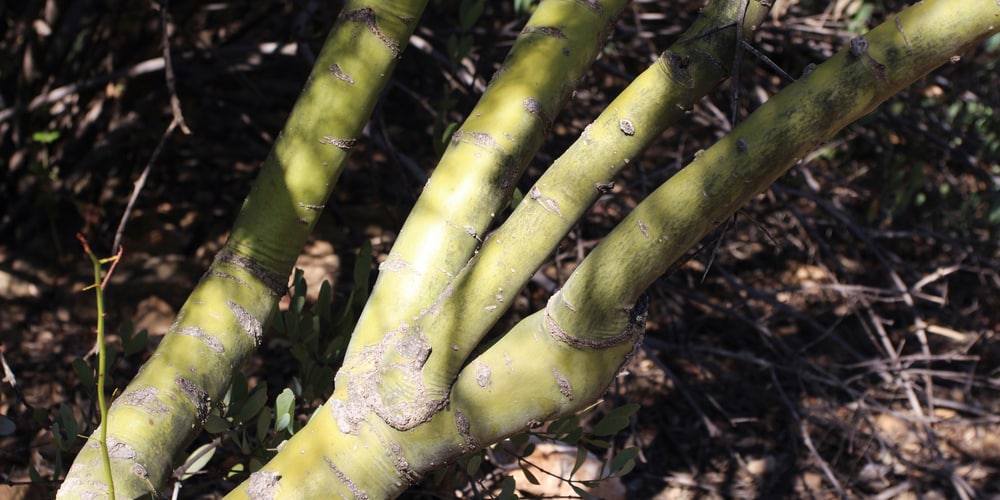When it comes to trees, it is very rare for us to think of the color green as being present anywhere except for the leaves. However, there is a certain species of tree that possesses bark that is naturally green in color. This species is called the Palo Verde.
Due to their exceptionally colored bark you may be considering planting and growing one of these beautiful trees yourself. So, here is everything you need to know about the most common Palo Verde trees and their green bark. Let’s look at green bark trees.
What is green bark?

Green bark is a sign that a tree has chlorophyll in its bark. This chemical gives plants and algae their natural colors. Moreover, it is a necessary and vital part of the photosynthesis process. This is because chlorophyll turns all of the sunlight, carbon dioxide and water into glucose, which is what plants feed on.
Green Bark Trees
When it comes to trees, the parts responsible for the photosynthesis are almost always the leaves. However, trees that possess green bark can actually use their bark to go through this process instead. The trees that do have green bark are all part of the Palo Verde family.
Blue Palo Verde
The Blue Palo Verde is mostly known for its blue-ish green bark and beautiful display of yellow flowers. This tree is native to southern California and is most frequently seen growing on rocky hills and slopes.
Moreover, the Blue Palo verde is a fast growing tree that can get as tall as thirty feet once it’s fully developed. In addition to this, this species of Palo Verde trees is drought tolerant and has a lifespan of up to a hundred and fifty years.
In order to properly see this tree grow and thrive it is recommended that you water it regularly. Even though the Blue Palo Verde is indeed perfectly capable of tolerating droughts it is still better that you provide it with water frequently, especially while it is still growing.
This is because water will help it grow at a faster pace and develop more healthily in general. Furthermore, this tree is capable of living in even the poorest soils as long as they are not water logged. This is because it is incapable of handling wet roots.
Foothills Palo Verde
The Foothills Palo Verde is commonly referred to as the little leaf palo verde due to the minimal amount of leaves that it possesses. When these leaves do appear on the trees, they are a bright yellow in color. Although this tree’s height usually averages at fifteen feet it can sometimes grow as tall as thirty feet. Moreover, the Foothills Palo Verde is pretty slow growing and can live for at least a hundred years. In fact, it is thought that this tree can sometimes live up to as old as four hundred years.
Similarly to the Blue Palo Verde, the Foothills Palo Verde is perfectly capable of tolerating any type of soil, no matter how poor it is, as long as it is well drained. In addition to this, this tree’s biggest water needs are experienced while it is still developing. When the Foothills Palo Verde has fully grown it does not require frequent watering to continue to thrive.
The Mexican Palo Verde
The Mexican Palo Verde is a tree that is commonly known by the name Jerusalem thorn. It is usually seen in the form of a spiny shrub or a more miniscule tree.
This tree is more keen on locations that are close to aquatic bodies such as dams, creeks and rivers. The Mexican Palo Verde is native to Mexico, just as its name suggests, and the Southwestern part of the United States.
This species of Palo Verde trees can grow up to thirty feet, although it isn’t usually that tall, in height and live up to twenty years in age.
The Mexican Palo Verde is highly tolerant to droughts and prefers full exposure to the sunlight. It also thrives best in hotter environments and cannot survive in temperatures below eighteen degrees fahrenheit. In addition to this, this tree prefers soils that are either sandy or gravelly but can also handle ones that are chalky or more alkaline.
The Sonoran Palo Verde
The Sonoran Palo Verde differentiates itself from the rest of the Palo Verde species through its height. It is taller than its siblings and has a height of up to thirty five feet. It also has fewer lower branches than other Palo Verde trees. As is suggested by its name, the Sonoran Palo Verde is native to the Sonoran deserts in Southwestern USA and Northwestern Mexico. Moreover, this tree has a pretty fast growth rate and is capable of living for up to a hundred years.
Like most other Palo Verde trees, the Sonoran Palo Verde does not require additional watering once it has fully developed. In addition to this, this tree can grow in most soil types as long as they are well drained, but does best in soils that are more sandy in texture.
Green bark trees: final thoughts
Overall, Palo Verde trees are a great architectural and eco-friendly addition to any gardens with suitable conditions. These trees are most commonly known for their green bark and ability to thrive in most types of soil. If looked after properly, these trees can make a long lasting part of any landscape.
Related article: Spiny Trees

